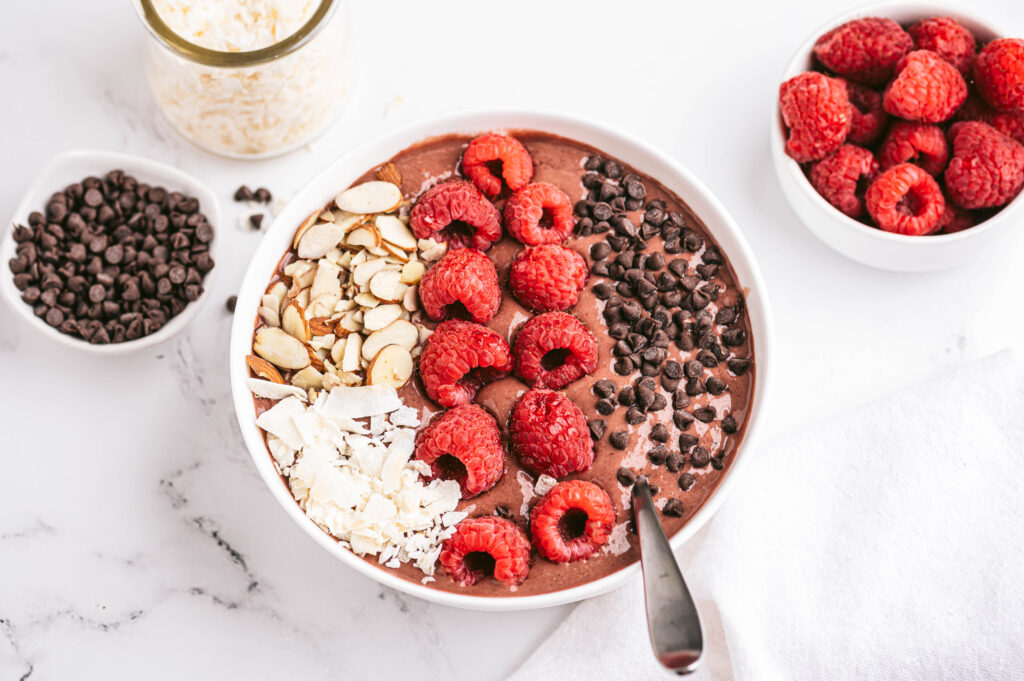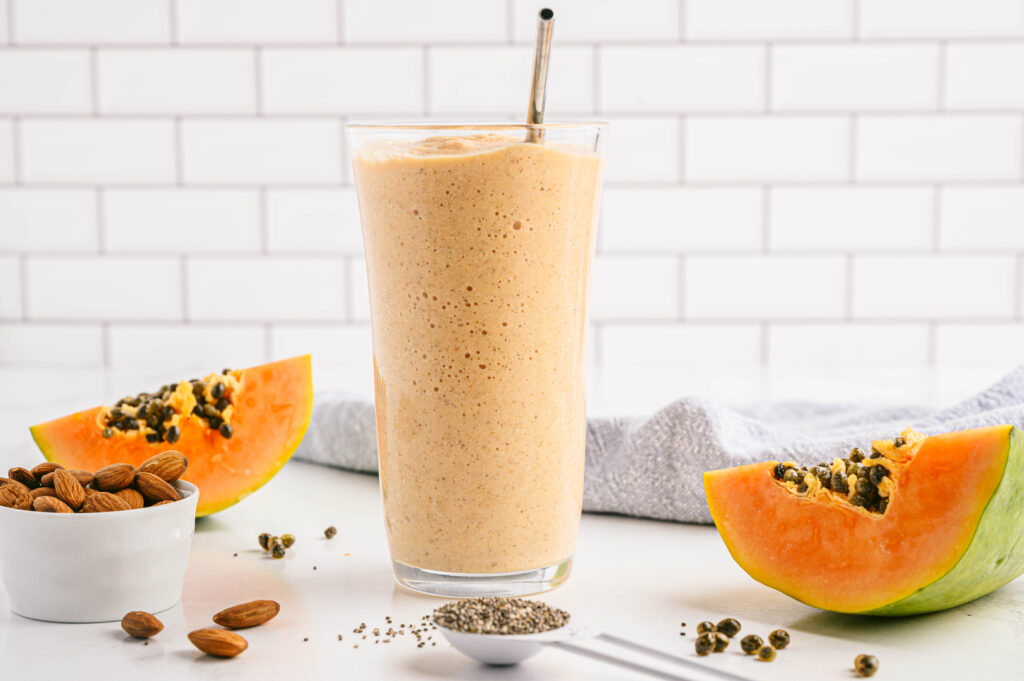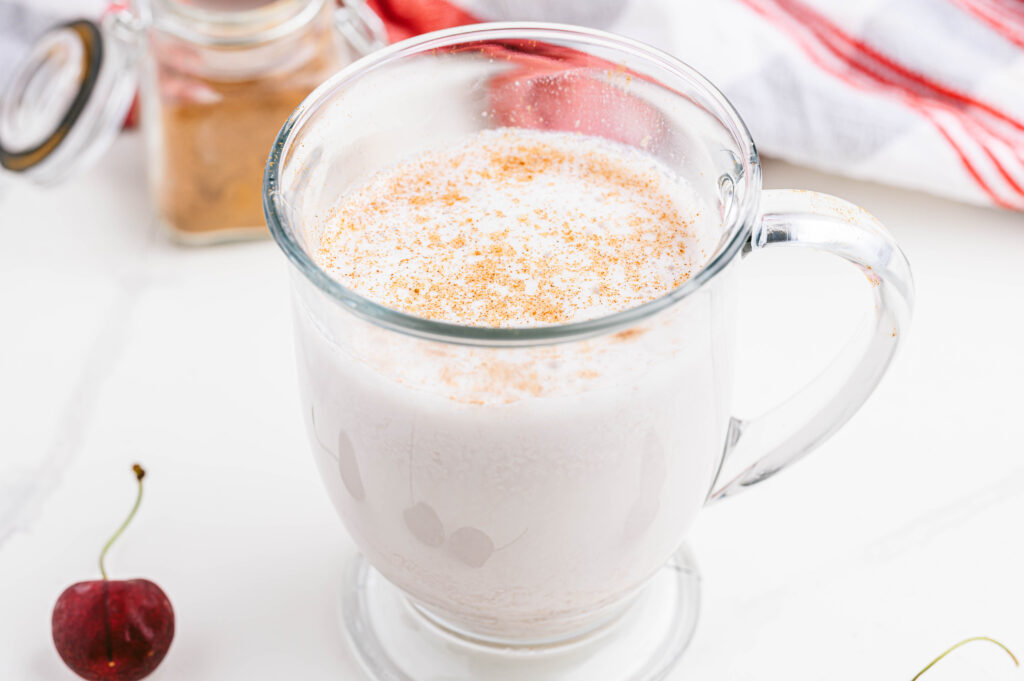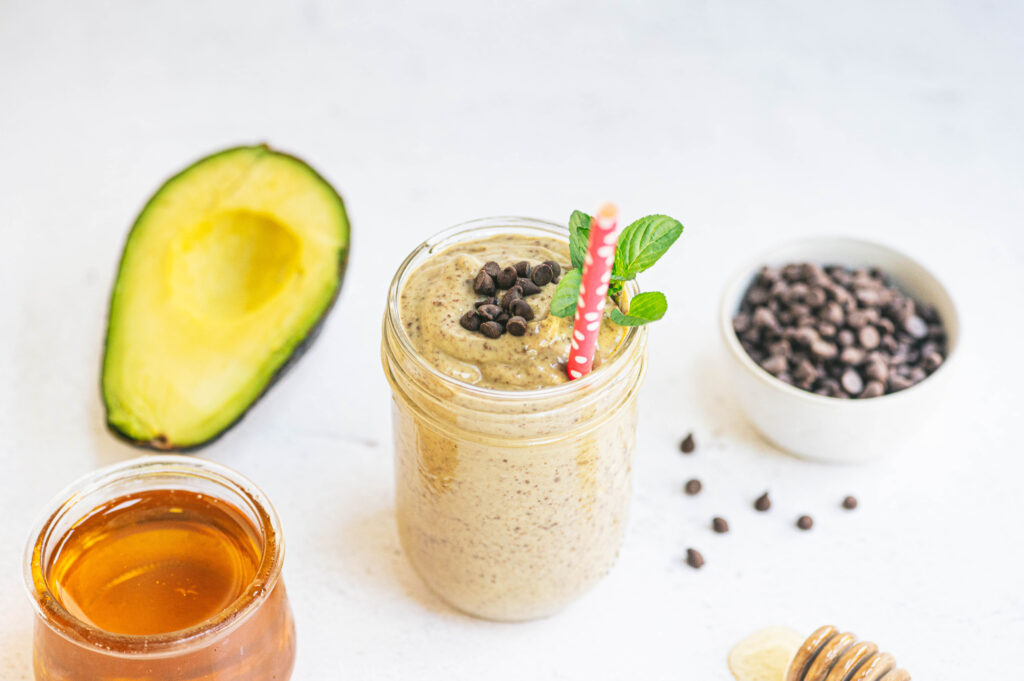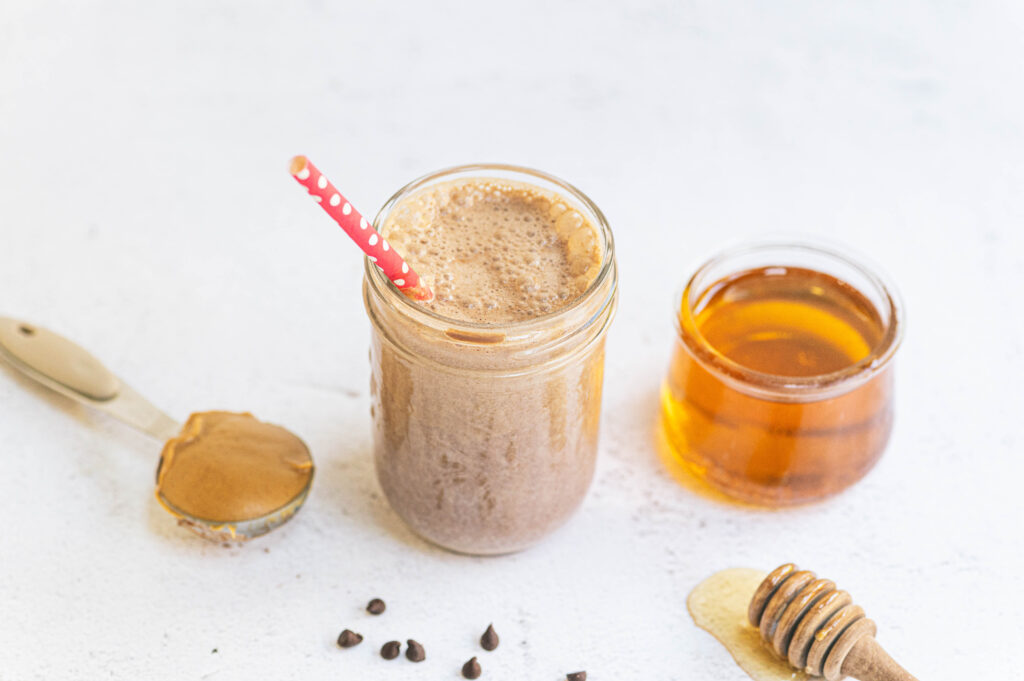
Ellie Wilson
MS, RDN, CDN
February is Lactose Awareness Month. Lactose is a type of carbohydrate or natural sugar found in dairy products. Some adults and children are sensitive to lactose, meaning, some dairy products may cause stomach upset. Dairy products are an important source of 13 essential nutrients; understanding how to manage this challenge is important to ensure you and your family don’t lose access to favorite foods and their nutrient-rich health benefits, such as calcium and phosphorus, that strengthen teeth and bones, whey and casein proteins that promote lean muscle mass, and Vitamins A, B2, B12, and Vitamin D, all important for energy, immune system health and production of red blood cells.
Lactose sensitivity (also known as intolerance) occurs for different reasons, ranging from genetics, age, medical conditions and cancer treatments. It can occur at any time of life, and may be very mild to more acute, depending on the cause. How much milk and dairy we regularly enjoy also plays a role – for example, if you regularly had milk and other dairy foods as a child, but gradually reduced the quantity over time, you may be surprised by a new sensitivity. For some people, lack of dairy intake over time changes how much we can make of the lactase enzyme, key to being able to digest dairy foods.
The good news is, there are still a lot of options. The more you know, the more confident and comfortable you will be.
Enjoy:
- Lactose-free milk and ice cream – all the great taste and benefits of regular milk without the lactose. Bonus – these can also substitute for milk in any recipe!
- Trace amounts – 1 gram or less per serving: Natural cheeses, cream, whipped cream, butter, American cheese, cream cheese, and ricotta cheese.
- Small amounts – 3 – 5 grams of lactose per serving: Cottage cheese, traditional and Greek yogurts. The cultures in yogurts break down some lactose naturally – try different styles and brands. Small servings may keep them on your plate without symptoms.
- Experiment with fermented options like Kefir – again, the cultures that help create the flavor break down some lactose during fermentation.
Good to Know:
Whether the sensitivity developed over time or is a reaction to a recent health change, many people can restore their gut function by having small amounts of milk/dairy foods over time.
- Lactose sensitivity may be temporary, especially if it occurs suddenly after a bout with a stomach bug or after cancer treatment involving the Gi tract. The lactase enzyme is produced in cells that may get temporarily knocked out but are restored as the body recovers from illness or treatment.
- Enjoy milk/dairy with meals or snacks – together, they slow digestion down and allow enough time for the enzyme to break lactose down, reducing or eliminating symptoms. Cookies and milk, fruit and yogurt, and cheese on a sandwich are all ideas to explore.
- Lactose sensitivity is not a dairy allergy – your MD can help you sort out which one it is.
- Whether the sensitivity developed over time or is a reaction to a recent health change, many people can restore their gut function by having small amounts of milk/dairy foods over time.
Good Moooove – Take these tips to store and explore!
Learn more about the American Dairy Association here!
Check out these lactose-free recipes!
Chocolate-Raspberry Smoothie Bowl
Creamy Papaya Protein Shake
Cherry Milk Steamer
Mint Chocolate Chip Milk
Chocolate Peanut Butter Milk
Ellie Wilson
MS, RDN, CDN
It is the most delicious time of the year! Dairy foods have been part of holiday cheer for hundreds of years, from the humble butter cookie to an inspiring Baked Brie Wreath, there is something for everyone and every celebration!
Holidays are a great time to enjoy those special family offerings that only grace the table at this time of year, or to create some new traditions with an exciting new recipe. It can also be a very busy time of year – nutrient rich dairy is ready to energize those busy days and festive evenings!
At home or away, a Christmas Charcuterie Board or a Charcuterie Wreath is a beautiful display of favorite cheeses, premium meats, crackers or bread, fruit and savory snacks. These recipes and tips will help you plan and share the joy of giving with each delicious bite! I love the idea of using cookie cutters to add holiday fun and cheer to the presentation – this is also a fun way for children to help make something special with you. Cut up some extra cheese and put aside some of the nuts, crackers and dried fruit to make a satisfying and easy grab-n-go snack that can fuel you well while you shop and wrap!
Love eggnog? Everyone in my house does! Eggnog is a traditional holiday drink with a rich history, and rich in recipe options, like this Eggnog Cheesecake . It’s a natural ingredient for a holiday bread pudding, and a wonderful breakfast treat in overnight oats with chia seeds and spices! It is also handy to have on hand for family or friends who stop by – children and adults can enjoy it anytime, and it can be a lovely cocktail with a dash of rum or bourbon.
Dairy is also part of holiday traditions for Hanukkah, like this Lemon Ricotta and Cherry Kugel, and Kwanzaa, like these savory Cheddar Cornbread Squares, and other cultural celebrations from around the world. Dairy may be historically central to some recipes and may help bridge traditions in others – it’s versatility is boundless.
Don’t forget the cookies and milk for Santa! You can be sure you will be on Santa’s nice list making one of these Holidairy Magic Milk recipes to serve with those essential cookies! Dairy Ambassador Justin Mesch has created a Dark Chocolate Cherry Magic Milk, and Dairy Ambassador Jessica Maslyn shares her warm Gingerbread Magic Milk. The fun doesn’t stop there – make sure you enter the Holi-Dairy Sweepstakes and vote for your favorite. You could win $1000 and a NesPresso machine, both fun presents for you!
However you celebrate, you will find all the dairy ingredients you need in our stores. Wishing a delicious and peaceful holiday season!
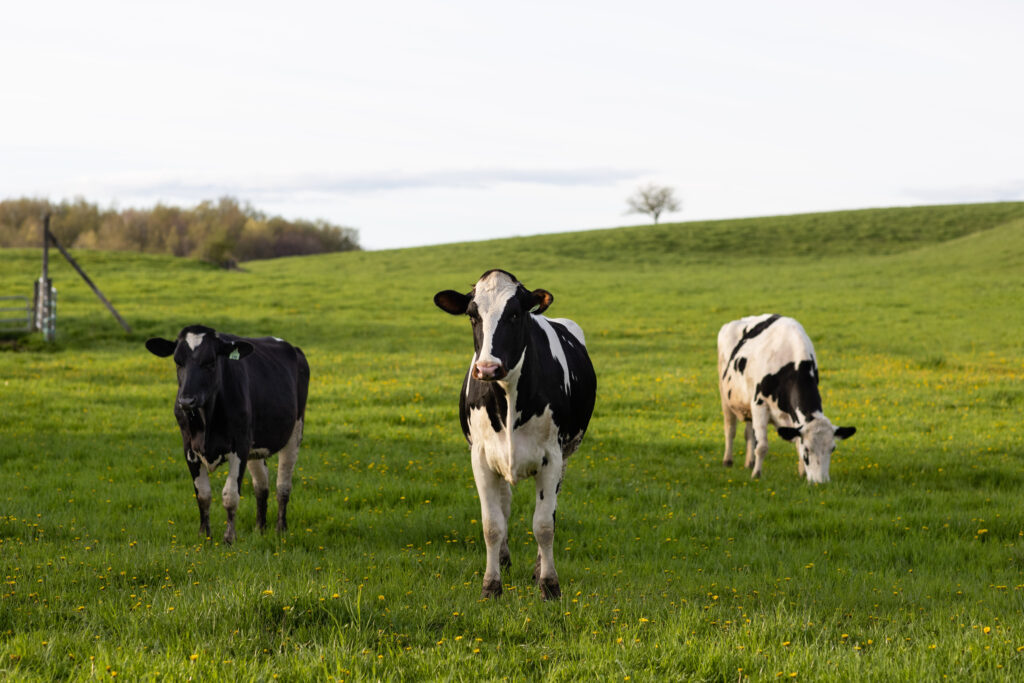
Written by our friends at the American Dairy Association
Milk goes from farm to grocery store in about 48 hours 365 days a year. Have you ever wondered how it is possible for this process to happen so quickly? Let’s talk about milk’s journey from cow to cup.
On the Farm
Dairy farmers like Kings Brother Dairy make sure milk is safe and nutritious every day and that process starts at the farm.
In the Barn
Cows need to be cared for to stay content and healthy – and produce great milk. Dairy farmers work 365 days a year making sure cows are comfortable, with the right food, water, bedding and veterinary care. Whether a farm is big or small, the cows and land are well cared for.
Transportation
Tanker trucks pick milk up at the dairy farm – for some farms, this is multiple times each day. The milk is tested for safety and quality on the farm and again at the dairy processing plant to ensure every tanker truck of milk is safe and pure.
Milk Processing
Garelick is the processor that Price Chopper uses to provide strict quality controls at every step of processing to ensure freshness, purity and great taste. Human hands never touch the milk and strict temperature rules must be followed.
Once at the processing plant, milk is pasteurized, homogenized, and bottled or turned into cheese, yogurt or another delicious dairy product.
At Price Chopper and Market 32, we strive to keep milk fresh, cold and well stocked so you can bring it home to your family.
Whether you choose skim, whole milk or lactose-free milk, your milk comes from a good place, and you can feel good about the 13 essential nutrients it provides – as well as the care the farmer puts into the cows and planet.
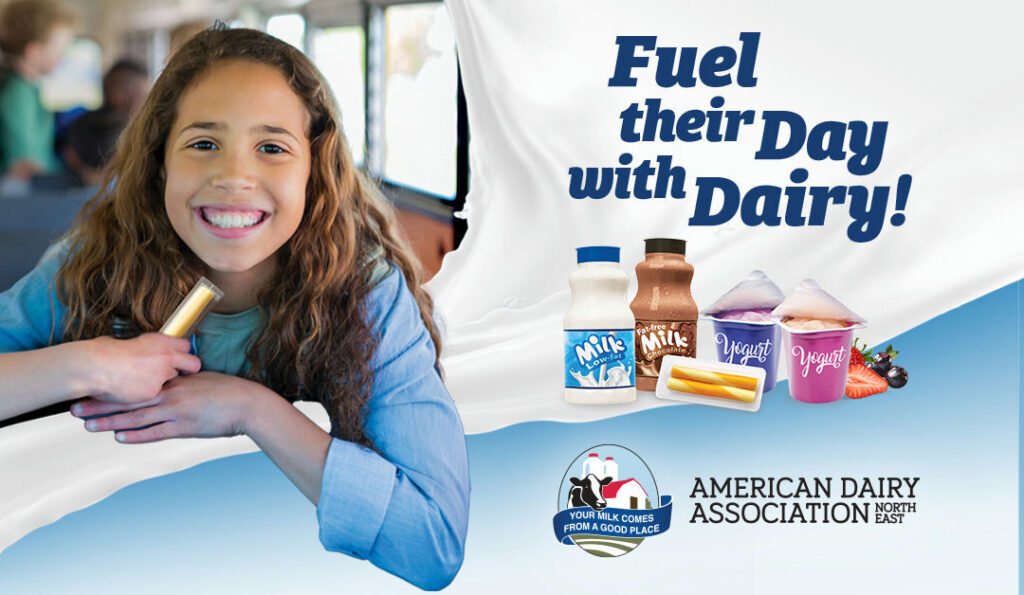
Written by our friends at the American Dairy Association
Focus on including dairy in your kids’ meals during this back-to-school time. Milk, cheese and yogurt help kids grow up strong because they deliver a unique combination of essential nutrients. They also keep kids energized throughout their day, keeping them focused throughout the school day.
Here are two easy ways to fuel their day with dairy:
- Have a smoothie before school.
A smoothie made with real milk and yogurt is a simple and easy way to pack a lot of nutrition into one glass and kids love them! This delicious strawberry acai smoothie is the perfect way to start their day.
Strawberry Acai Smoothie Recipe
Ingredients:
½ cup milk
6 ounces strawberry yogurt
1 cup slide strawberries, fresh or frozen
1-ince piece of ginger, peeled
2 small beets, cooked and cooled
1 teaspoon acai powder
Preparation:
In a blender, combine milk, yogurt, strawberries, ginger and beets. Blend over high speed until smooth. Serve immediately.
2. Include dairy in lunchboxes.
Adding individual milks, snacking cheeses and yogurts to your kid’s lunch boxes is another easy way to fuel their day with dairy. Not only are these dairy products affordable, accessible, and nutritious they have key nutrients that play an important role in child nutrition by supporting growth and development.
Try a few of these pairings from this resource:
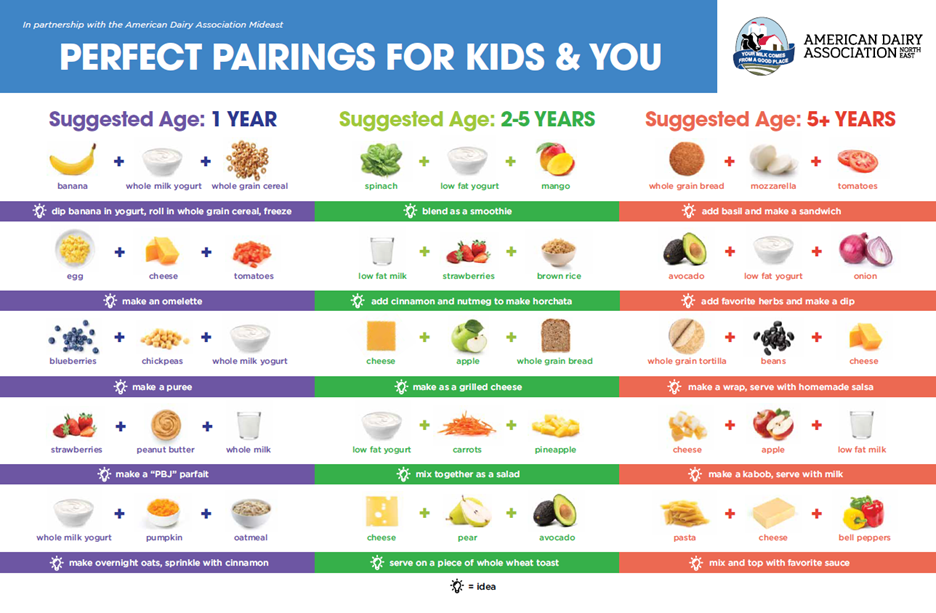
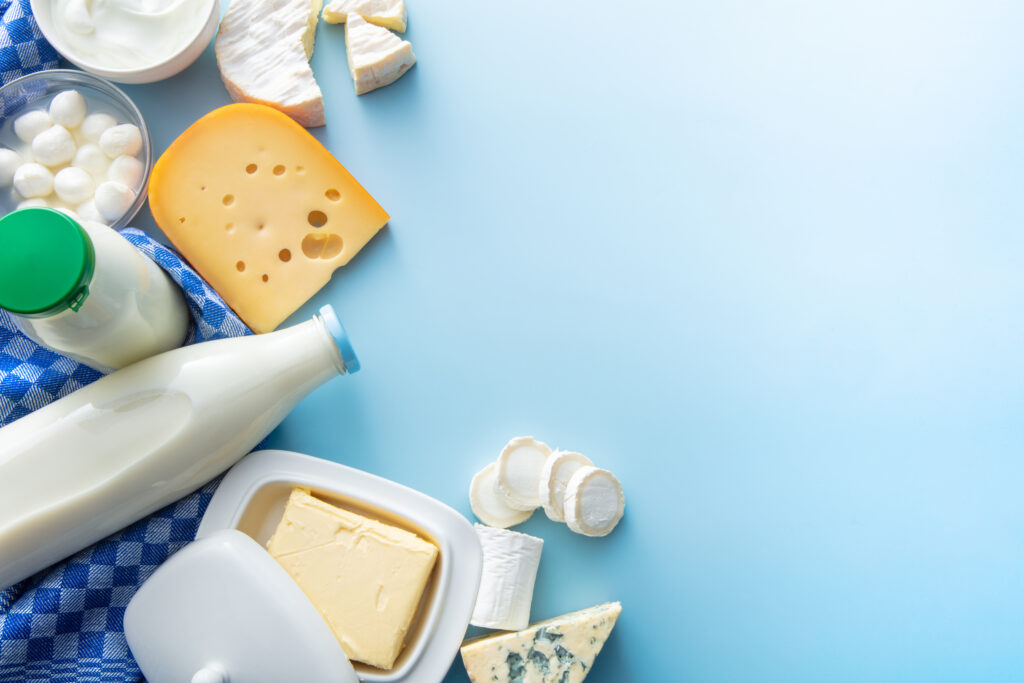
Ellie Wilson
MS, RDN, CDN, FAND
Food and health are deeply connected – the quality and quantity of nutrient rich foods throughout our life is directly related to how we grow and stay well. I count our regional access to diverse types of farms and agricultural products as a big win for our customers and communities, especially the number of dairy farms and the range of products dairy contributes to wellbeing. The Dietary Guidelines for Americans₁ persistently recommend 3 servings of dairy per day because it is a familiar, accessible and delicious way to get a significant amount of nutrients in each serving – some of which are nutrients, like calcium, potassium, Vitamin D, and fiber, we are not getting enough of for optimal health.₂ Check out how dairy foods fuel wellness for all ages and stages!
Infants and toddlers – benefit from Mom’s intake of dairy, such as milk and yogurt, while they are pregnant and nursing, with B12 and Choline supporting red blood cell production for Mom and baby, and the growth of infant brains. Toddlers transition to whole milk at about 1 year old because it has a powerful matrix of nutrients that support overall physical and cognitive health and growth. In fact, milk and water are the primary beverages recommended for toddlers and children through age 5. For them, dairy fuels growth, muscle and bone development,₃ and helps build immunity, with its protein, Vitamin A and D, zinc and selenium content.₄ This is also why milk and dairy are such a focus in schools – both regular and chocolate milk fuel growth and wellness throughout their school years. During that time milk and dairy are considered “vehicle” foods – they deliver a range of critical nutrients whether they are enjoyed alone or with other foods, like fruit and whole grains, when snacking or eating a meal. Teens are often way below the dairy intake they need, so encouraging some deliberate focus on dairy intake is a smart move. Adolescence is a unique time of growth, particularly for increasing bone mass and density to prepare for adulthood needs.₁ We are only ‘young’ for the first 18 years – the quality and quantity of the remaining 60+ years is partially built on the food and health habits of those critical growing stages.
The Summer 2024 Olympics are in full swing, which brings me to fueling adults and performance, whatever that may be, including sports, hobbies, training and working the full spectrum of jobs and careers, having families and managing the general chaos of busy lives. All of that requires fuel to support your best efforts, whether it be to win the gold medal, or “win” from having the health, stamina, and energy to seek your most optimal path through life. We all have a need to ensure we can perform whatever actions required to live well and reach our goals. For those Olympians, who may be participating in more than one event, chocolate milk, yogurt and cheese sticks are go-to refuelers, providing hydration, electrolytes, protein and carbohydrates to refuel and recover quickly between sports events. Hard-working adults have a similar level of stress on body systems – maintaining a regular habit of enjoying dairy may be just the thing you need to enjoy the fruits of your labor and everything else!₁
Dairy delivers wholesome goodness, again and again, to our glasses and plates, supporting the wellbeing, energy, enjoyment and vitality that brings richness to our lives. Enjoy!
Sources:
₁U.S. Department of Agriculture and U.S. Department of Health and Human Services. Dietary Guidelines
for Americans, 2020-2025. 9th Edition. December 2020. Accessed at https://www.dietaryguidelines.
gov/sites/default/files/2020-12/Dietary_Guidelines_for_Americans_2020-2025.pdf
HEI Scores for Americans | Food and Nutrition Service (usda.gov)
Weaver CM, Gordon CM, Janz KF, et al. The National Osteoporosis Foundation’s position statement
on peak bone mass development and lifestyle factors: a systematic review and implementation
recommendations. Osteoporos Int. 2016;27(4):1281-1386. doi:10.1007/s00198-015-3440-3.
Calder PC, Carr AC, Gombart AF, Eggersdorfer M. Optimal nutritional status for a well-functioning immune system is an important factor to protect against viral infections. Nutrients. 2020;12(4):1181.


